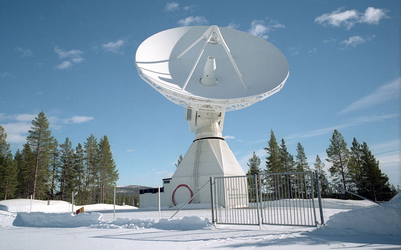Facts and figures
Objectives: To offer a unique view inside Earth to study: core dynamics, geodynamo processes and core–mantle interaction; magnetism of the lithosphere and its geological context; 3D electrical conductivity of the mantle related to composition; magnetic signature related to ocean circulation. In addition, Swarm data will be used to study the Sun’s influence on Earth system by: analysing electric currents in magnetosphere and ionosphere; understanding the impact of solar wind on dynamics of the upper atmosphere.
Constellation: Three identical satellites launched together
Instruments: Vector field magnetometer, absolute scalar magnetometer, electric field instrument, accelerometer, GPS receiver, startrackers and laser retroreflector
Size: Each satellite is 9.1 m long (including a 4-m deployable boom), 1.5 m wide and 0.85 m high
Mass: Each satellite weighs 473 kg at launch (including 106 kg of Freon propellant)
Power: GaAs solar cells, 48 Ah Li-ion batteries
Launched: 22 November 2013
Launch site: Plesetsk, Russia
Launcher: Rockot (with Breeze-KM upper stage)
Launch provider: Eurockot Launch Services GmbH
Orbit: Two satellites orbit side-by-side at an initial altitude of 460 km, decaying naturally to 300 km; the third satellite orbits at about 530 km
Mission control: ESA's European Satellite Operations Centre (ESOC) in Darmstadt, Germany
Ground Station: Science data downloaded to ESA’s ground station in Kiruna, Sweden
Data: Processing, distribution and archiving managed by ESA's Centre for Earth Observation (ESRIN) in Frascati, Italy
Nominal duration: Four years (plus three-month commissioning phase)
Project: Mission development and commissioning managed at ESA’s European Space Research and Technology Centre (ESTEC) in Noordwijk, the Netherlands
Prime Contractor: Astrium GmbH (now Airbus Defence & Space)













